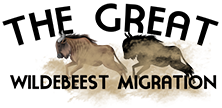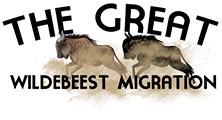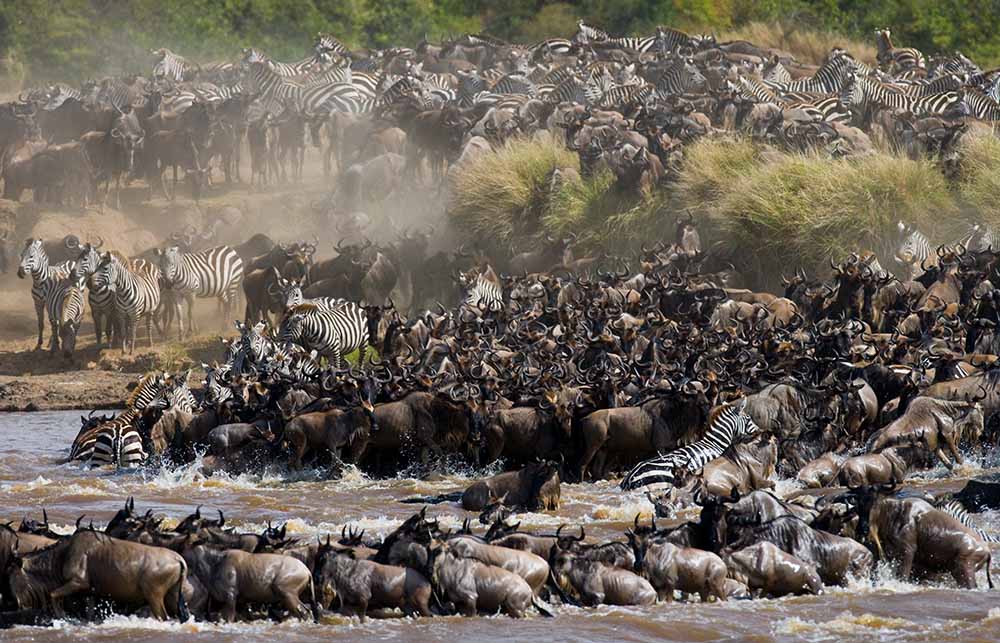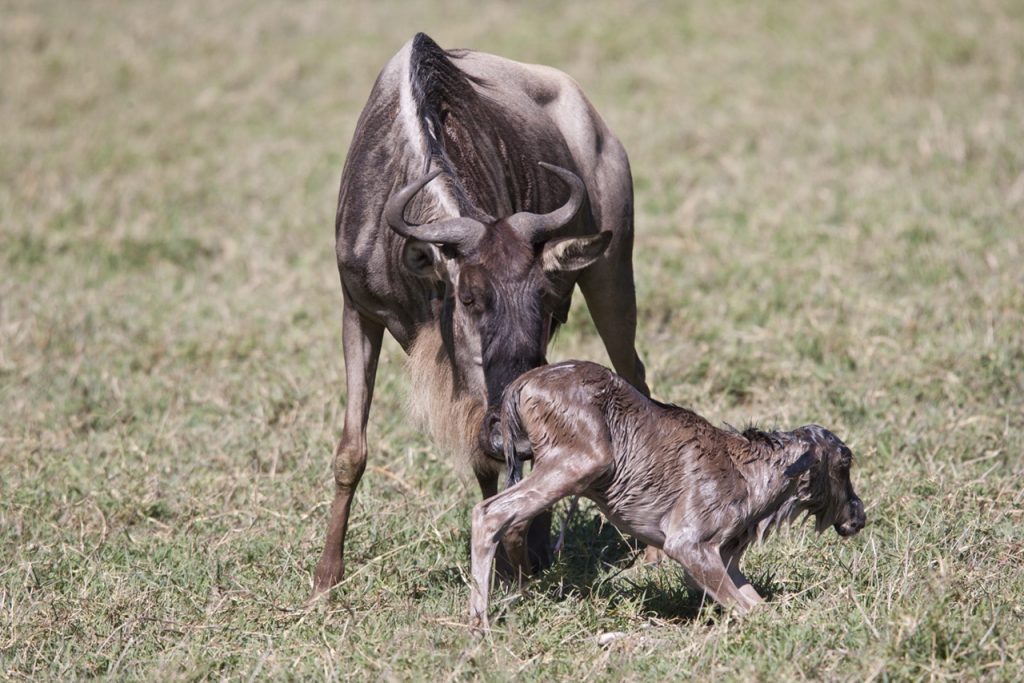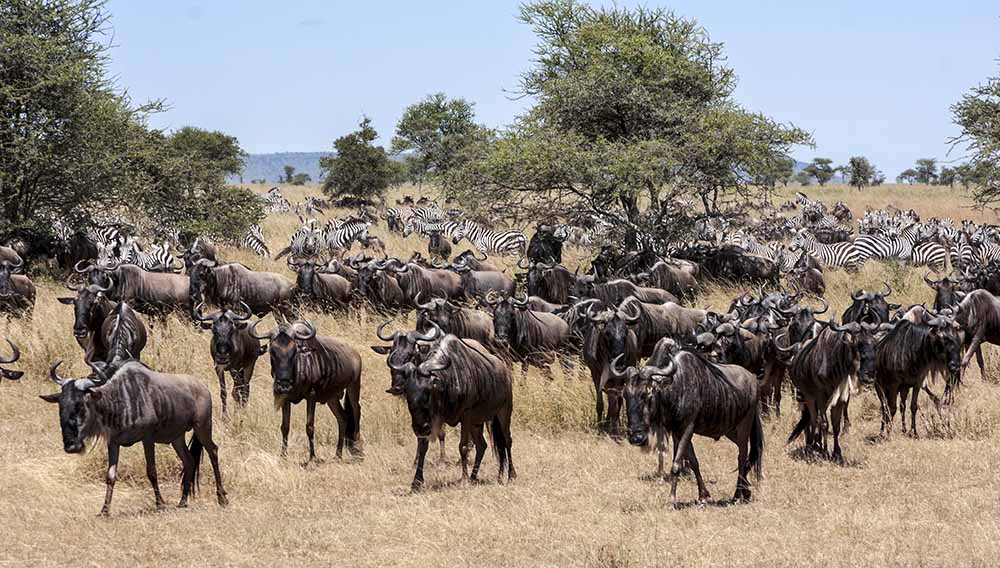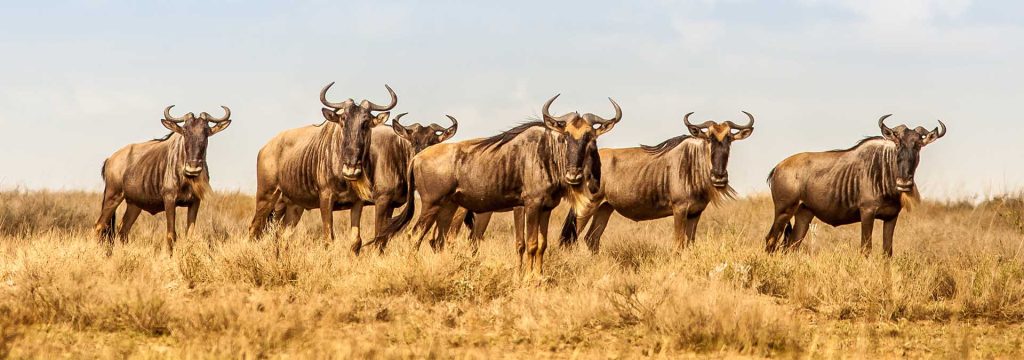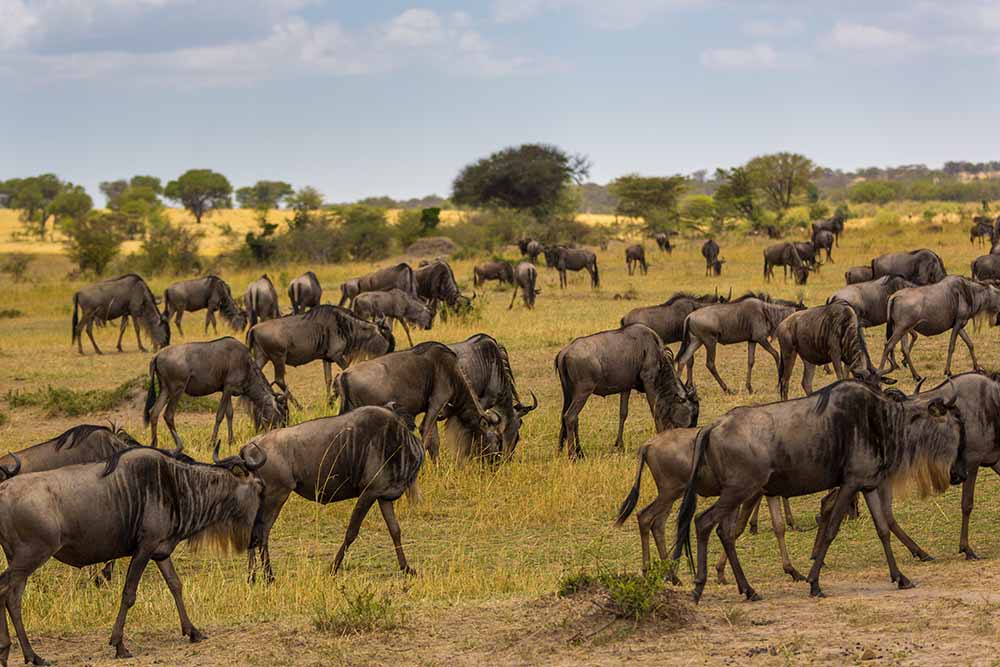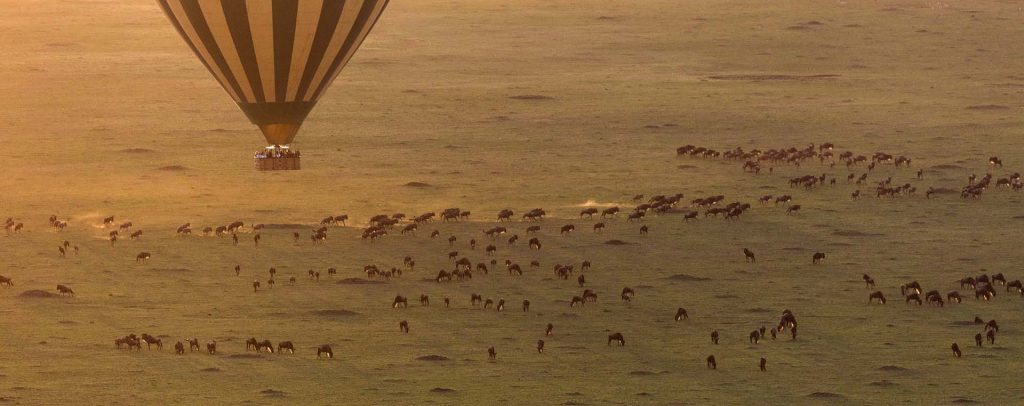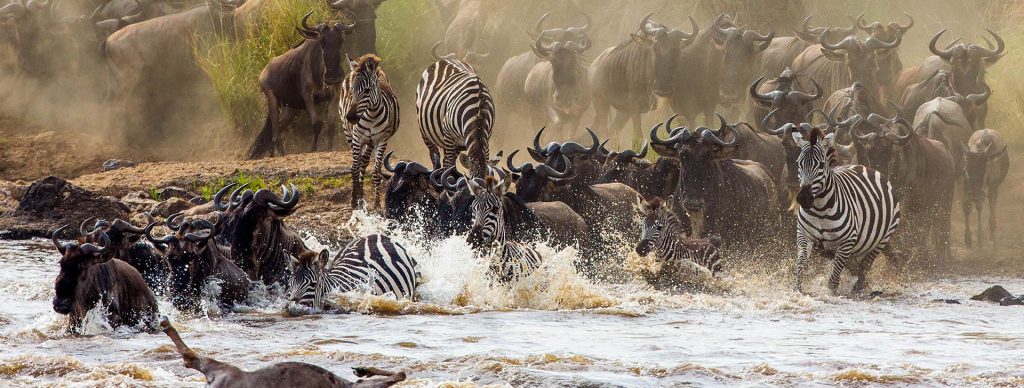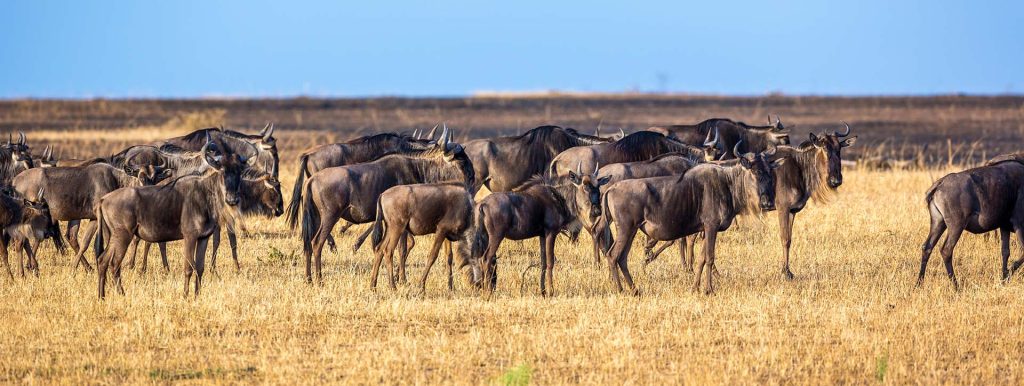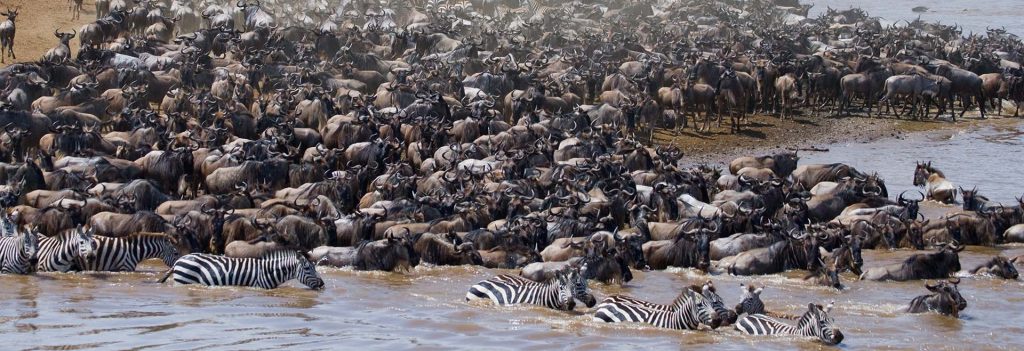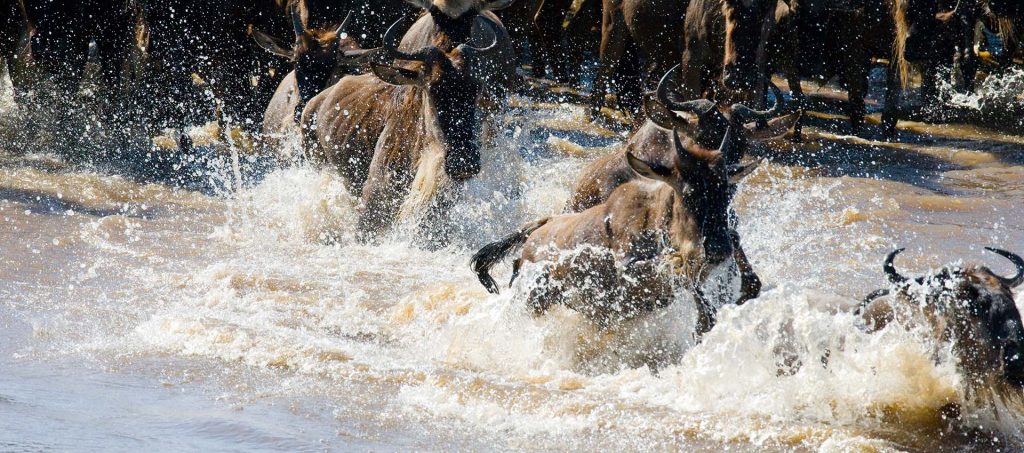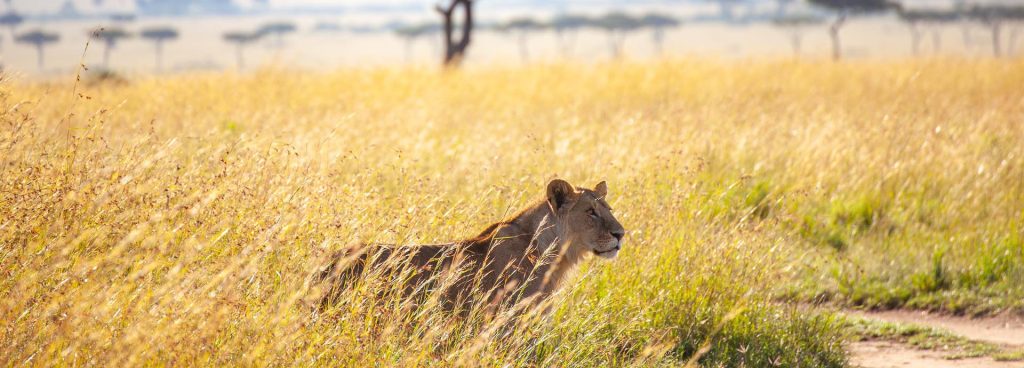Wildebeest migration - Grumeti River Serengeti
Traveling to Africa is exciting year-round as there is always game to be found across several countries. However, some times of the year are truly magical. For a few weeks at the start of the year, traveling to the Serengeti in Tanzania gives you the rare opportunity to witness calving season in the Serengeti, where thousands of wildebeest are born each day.
Calving usually takes place between January and February of each year. In January the herds begin making their way to the south of the Serengeti after the rains start falling. The question of how the herds know when it is raining or not is something many people have questioned and the answer is that we actually do not know! Many people say that they can smell the rain, others believe they can sense when the pressure in the air changes. The only thing we know for sure is that where it rains, the herds follow. Within a two to three week time period, over half a million wildebeest are born with as many as 8000 wildebeest being born on the same day!
It’s not only wildebeest that migrate – zebra are also part of this annual migration
With the promise of rains in the near future between February to May, the young wildebeest are almost always guaranteed fresh and constant grass all the way up into the central parts of the Serengeti.
It should come as no surprise that, with all of these baby zebra, gazelle and wildebeest stumbling around on their wobbly legs, the number of predators in the area reaches an all-time high during this time of the year. However, an easy meal is no guarantee!
These mothers have been following this route for thousands of years and know most of the tricks that predators pull. Wildebeest mothers instinctively know to give birth on the shorter grass plains where approaching predators are easier to spot. Other mothers join them here and actually form protective barricades around the younger and most vulnerable new additions to the herd in order to ensure they have the greatest chance of survival.
Predators also have to deal with extremely over-protective mothers who will do everything in their power to protect their young so if you are travelling to the Serengeti during this time you are guaranteed to see some action unfolding between mothers, their calves and the hungry predators prowling the surrounding areas.
It is not only the older, more-experienced predators you will have the chance to see though, they too have co-ordinated their birthing times to coincide with the birth of their prey so that their young have the highest chance of survival too. With thousands of baby wildebeest running around it is much easier for a mother lion, cheetah or leopard to find a meal for their hungry cubs as well as give them the opportunity to learn how to hunt for themselves by practicing on young calves before they have to go out and fend for themselves, young cubs learn valuable lessons during this time which is crucial to their success.
All of these factors go to show that the timing and location of the calving season was purposefully selected in order to increase the chances of survival, both for prey and predator alike. The calving season is truly a remarkable time in East Africa and has so much to offer any safari-goer looking to see something other than the usual river crossing.
What is Calving Season?
Each year the Serengeti plays host to hundreds of thousands of animals during the migration. In June and July wildebeest make their way across the Grumeti River moving northwest in the park. It’s a sight that easily tops the bucket lists of many travelers. By December, the herds have started to make their way back down south to the southern Serengeti. There, they feed on the short green grasses of the plains. By late January and early February, perhaps the greatest spectacle of the Serengeti takes place with the wildebeest calving season. Approximately 8,000 young wildebeest are born every single day during the peak of the Serengeti calving season. There truly is nothing that compares to seeing a baby wildebeest take off running just minutes after being born.
Where calving season take place in Serengeti Tanzania?
Southern Serengeti and ndutu plains area areas that allow you to stay close to the action as the calving season is accompanied by large number of predators that attracted from the southern Serengeti and the northern ngorongoro conservation area.
